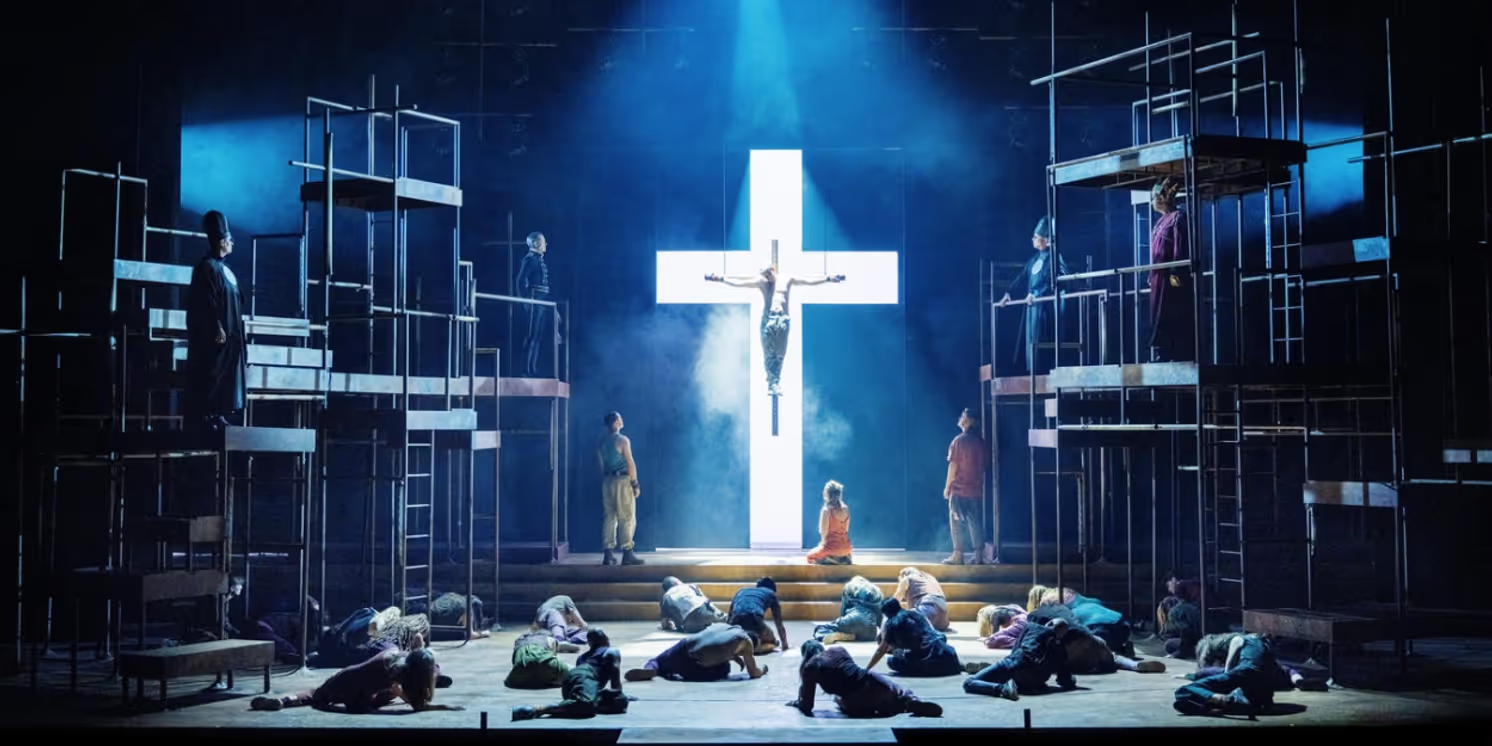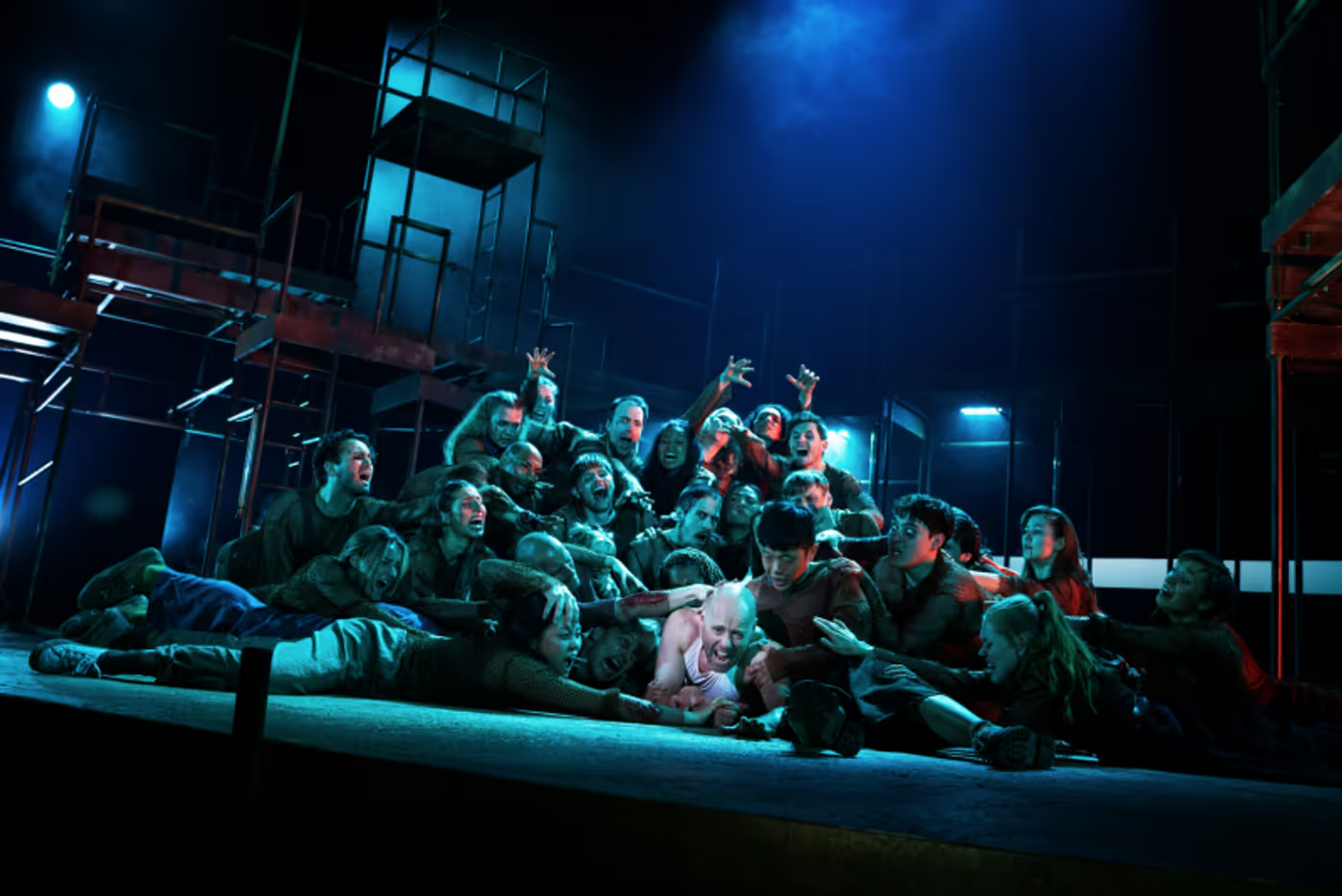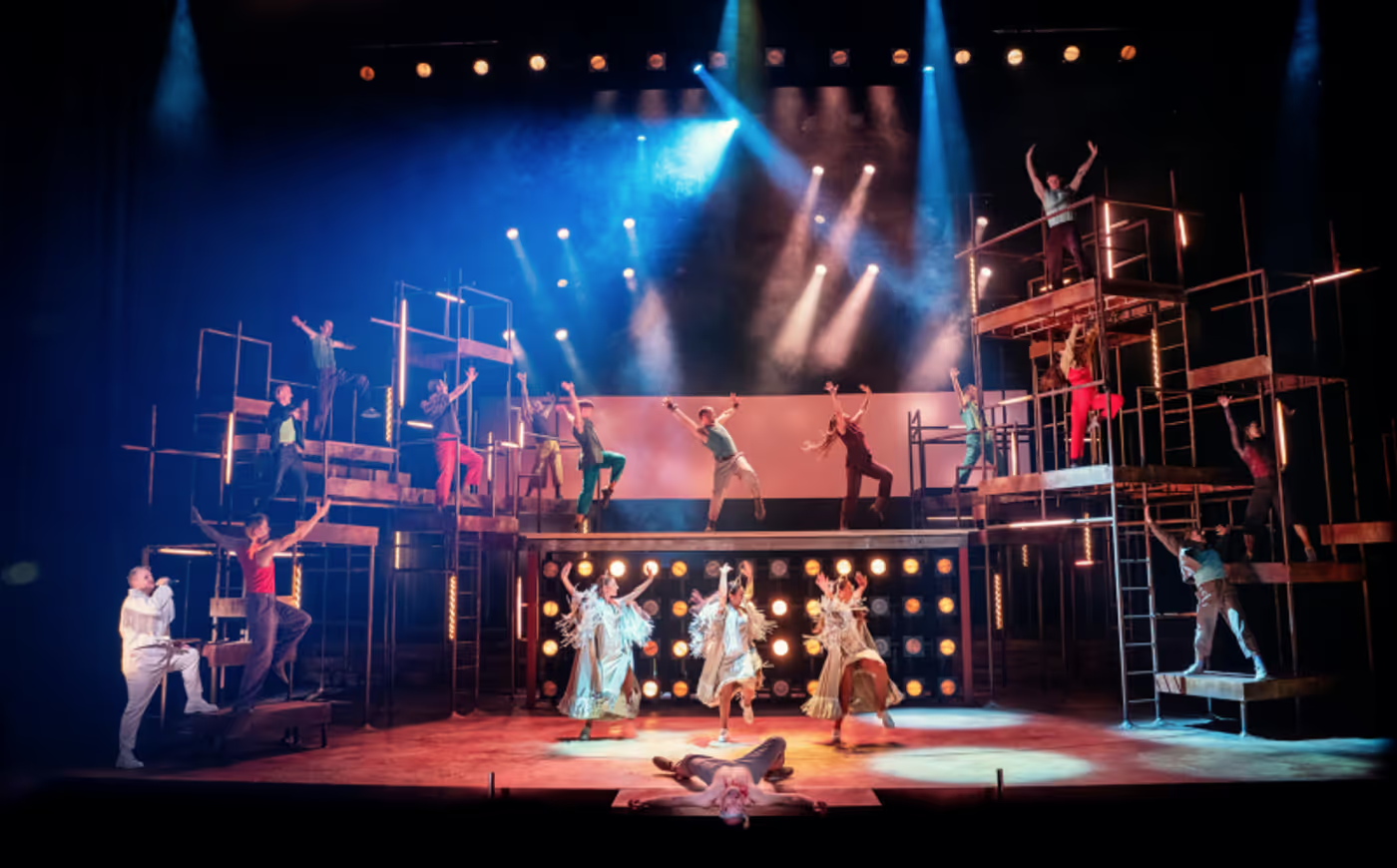Review: JESUS CHRIST SUPERSTAR at Folketeatret
A Struggling Reimagining

 Folketeateret’s new production of Jesus Christ Superstar set out to offer a fresh take on Andrew Lloyd Webber and Tim Rice’s beloved rock opera. Loosely inspired by the 2018 NBC live broadcast, this production incorporated a mix of a scaffolding set, urban stree twear, and a surreal imaginary atmosphere. While these choices were surely intended to inject a new sense of energy into the classic, the result felt more like a retread of concepts that have become borderline clichés. Since the '90s, many productions of this show had leaned on modern settings, and here, the approach felt somewhat disconnected from the core emotional depth of the story.
Folketeateret’s new production of Jesus Christ Superstar set out to offer a fresh take on Andrew Lloyd Webber and Tim Rice’s beloved rock opera. Loosely inspired by the 2018 NBC live broadcast, this production incorporated a mix of a scaffolding set, urban stree twear, and a surreal imaginary atmosphere. While these choices were surely intended to inject a new sense of energy into the classic, the result felt more like a retread of concepts that have become borderline clichés. Since the '90s, many productions of this show had leaned on modern settings, and here, the approach felt somewhat disconnected from the core emotional depth of the story.
The decision to cast well-known actors and pop singers brought star power to the stage, but unfortunately, it also highlighted a significant issue: the demanding nature of Lloyd Webber’s score. While these performers brought their own unique qualities, many struggled to meet the vocal and emotional demands of the roles. Aksel Hennie, who took on the role of Jesus, sang adequately and showed several times that he had wailing in check, but his performance often sounded like live auto tuning or some sort of sound filters and ambiance effects to bolster his voice (even a few places that felt pre-recorded during Gethsemane). His portrayal was a little all over the place and didn't find the necessary dramatic nerve until the pivotal (and in this case very graphic) 39 lashes scene, which came too late to resonate fully. Despite clear effort, Hennie's use of falsetto where a full chest voice was needed diluted the power of some of the musical’s most impactful moments, making it difficult to fully connect with his take on Jesus.
Jeppe B. Laursen’s portrayal of Judas, while showcasing strong acting, faced similar challenges early on, but showed improvement in the second act, particularly during the iconic “Superstar” number. Here, Laursen captured some of the raw intensity that defined Judas’s character. Yet again, however, the reliance on sound engineering to support his vocal performance detracted from the authenticity that made this role so compelling. Despite these issues, Laursen managed to bring a sense of depth to Judas as the show progressed, offering signs of the internal struggle that drove the character.
Ingrid H. Håvik, known for her work as a recording artist, brought a unique vocal style to Mary Magdalene. While her breath control issues were apparent, adjustments were made to the music to accommodate her range, and for some reason, her signature harmonies were added to the end of “I Don’t Know How to Love Him.” These efforts, while creative, couldn’t completely overcome the difficulty of conveying Mary’s emotional journey. Håvik’s performance found more resonance in the second act, especially in the duet “Could We Start Again, Please” with Jonas Oftebro’s Peter, offering a moment of genuine emotional connection.
Espen Lind as Pilate delivered a strong vocal performance. His acting, however, did not match the power of his voice, leaving his portrayal feeling somewhat stiff and one-dimensional. Magnus Grønneberg, as Caiaphas, struggled vocally and did not have the skills to convey the character, lacking the "depth" and authority required. Bjarte Tjøstheim provided a lighthearted moment as Herod, although his comedic approach didn’t achieve the show-stopping quality that this number typically requires. On a more positive note, Sigurd Vespestad Marthinussen once again proved he could sing like no other and categorically "sang" circles around the other performers as Simon. Frode Winther (as Annas) and Jonas Oftebro (as Peter) offered solid support in their roles, with Oftebro showing promise for future success in musical theater.
However, where this production truly found its strength was in its ensemble. The ensemble’s energy, precision, and commitment were outstanding. Their dynamic singing and vibrant dancing injected much-needed life into the show, often compensating for the shortcomings of the lead performances. Whether portraying the crowds in Jerusalem, the followers of Jesus, or the ominous mob scenes, the ensemble brought a level of intensity and cohesion that anchored the production. The other true highlight of the production was the orchestra, which delivered Lloyd Webber’s rock-infused score with energy and precision. Their performance provided a solid foundation for the musical, capturing the urgency and dynamic feel that the score demands.
While I've seen several British productions by director Cressida Carré that I really enjoyed for her innovative staging and attention to character development, this time around I felt it lacking. Yes, the production looks lavish and big, but I missed the little nuances in the direction that makes it strike a chord. It didn't feel like a finished product.
Technically, the production leaned heavily on sound and light effects to enhance the narrative. While these elements sometimes added to the atmosphere, their overuse often became distracting, drawing attention away from the performers. The apparent application of sound filters, ultimately led to a sense of artificiality, undervisning the emotional rawness of key scenes. A notable misstep was the extended sound effect during Jesus’s death scene, where the traditional abrupt silence was replaced with the sound of his breath fading away. This choice, rather than adding drama, lessened the impact of what should have been a profound moment.
While Tim Rice’s lyrics are known for their clever interplay of sacred and secular themes, much of this nuance was lost in translation. The adaptation struggled to capture the rhythmic precision and emotional depth that were hallmarks of Rice’s work, making the discourse between ancient story and contemporary concerns less effective.
Folketeateret’s Jesus Christ Superstar had moments of promise but ultimately struggled to find a cohesive and impactful voice. The production’s attempts to modernize and re imagine the classic were overshadowed by vocal limitations and overused technical effects. Yet, within these challenges, there were moments of potential. The strong orchestral performance and the efforts of the ensemble provided highlights that hinted at what could have been a more successful reinterpretation.
Moving forward, it would be advantageous to strike a balance between innovative approaches and the foundational strengths of musical theater, such as powerful vocals and authentic storytelling. By doing so, we can ensure that the unique demands of the art form are honored and treated with the respect they deserve, creating productions that resonate deeply with audiences while still pushing creative boundaries.
Production photos: Fredrik Arff / Scenekvelder


Original Text: Tim Rice
Music: Andrew Lloyd Webber
Norwegian Translation: Atle Halstensen
Cast:
Jesus: Aksel Hennie
Judas: Jeppe B Laursen
Mary: Ingrid H Håvik
Pilate: Espen Lind
Caiphas: Magnus Grønneberg
Herod: Bjarte Tjøstheim
Annas: Frode Winther
Peter: Jonas Oftebro
Simon: Sigurd Marthinussen
Artistic Team:
Cressida Carré - Director and Choreographer
Atle Halstensen - Artistic Director
Sara Perks - Set Designer and Props Master
Matt Haskins - Lighting Designer
Sarah Mercadé - Costume and Makeup Designer
Bjarne Dankel - Sound Designer
Bendik Eide - Orchestra Leader and Music Supervisor
Marie Pihlstrøm - Vocal Supervisor
Adam Haigh - Assistant Director
Reader Reviews

Videos


